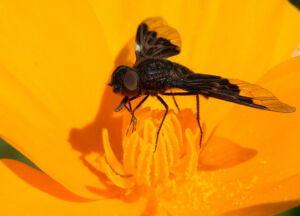Biodiversity conservation as infectious disease prevention: why a social-ecological perspective is essential
Florian Dirk Schneider et al.
Available online
AJAP II investigates environmentally friendly measures against the Asian bush mosquito, tests their effectiveness and examines their acceptance by the population and local authorities.
The AJAP II project aims to assess the suitability of environmentally friendly measures to combat Asian bush mosquitoes. It also examines how the human population can be involved in the implementation of the measures and how they are accepted.
The research project is divided into four work packages. In a first step, the efficiency of various environmentally friendly control agents (natural plant oils lavender and carnation, biological larvicide Bacillus thuringiensis israelensis, copper coins) will be tested in a large-scale outdoor experiment. On selected cemeteries in Hesse and possibly Rhineland-Palatinate, the occurrence of the Asian bush mosquito is monitored at regular intervals with the help of traps of attractants.
In the fight against a harmful organism, which aims to reduce the number of offspring, resistance to the substances used may develop over time. The second work package will examine over a period of three years which measures are most effective for a longer period of time and will not become ineffective after a short while due to a resistance developed by this particular mosquito species.
In order to implement the prevention and control measures, it is, however, crucial that the authorities as well as the human population accept those measures and show a willingness to help.
ISOE is responsible for the third work package, which uses quantitative and qualitative surveys to investigate how municipalities can be effectively integrated into the implementation of prevention and control measures and to what extent these measures are accepted within the human population. The findings from the three previous work packages will be incorporated into a framework for an integrated vector management system for the Asian bush mosquito. To this end, the various control measures are assessed in terms of their efficiency, sustainability, cost-effectiveness and acceptance in the human population and a promising combination of control and prevention measures will be discussed.
The Asian bush mosquito is an invasive alien species of mosquito that has spread over the last few years in the federal states of Baden-Württemberg, Bavaria, Hesse, Rhineland-Palatinate, North Rhine-Westphalia and Lower Saxony. It occurs primarily in human settlements, especially at the periphery of settlements, on cemeteries and in allotment gardens. Rain barrels or flower vases offer ideal breeding grounds for the mosquitoes’ larvae. The Asian bush mosquito is the vector of various pathogens, including the virus of Japanese encephalitis and the West Nile virus. There are currently no pathogen-specific drugs for both viral diseases. Infections can therefore only be prevented prophylactically. Hygienic measures reduce the likelihood of infecting humans or animals. The use of insecticides combats mosquitoes, but at the same time it has a damaging effect on the environment or poses a health risk for humans. In a predecessor project (AJAP), the insecticidal effect of different substances such as essential oils was identified. These are now to be tested outdoors.
Florian Dirk Schneider et al.
Available online
Marion Mehring et al.
Available online
Friederike Reuß et al.
Available online
Jiska van Dijk et al.
Available online
What are the causes of biodiversity loss? How can we protect biodiversity in the future? How can we create a willingness for change?
Go to Topic Page
